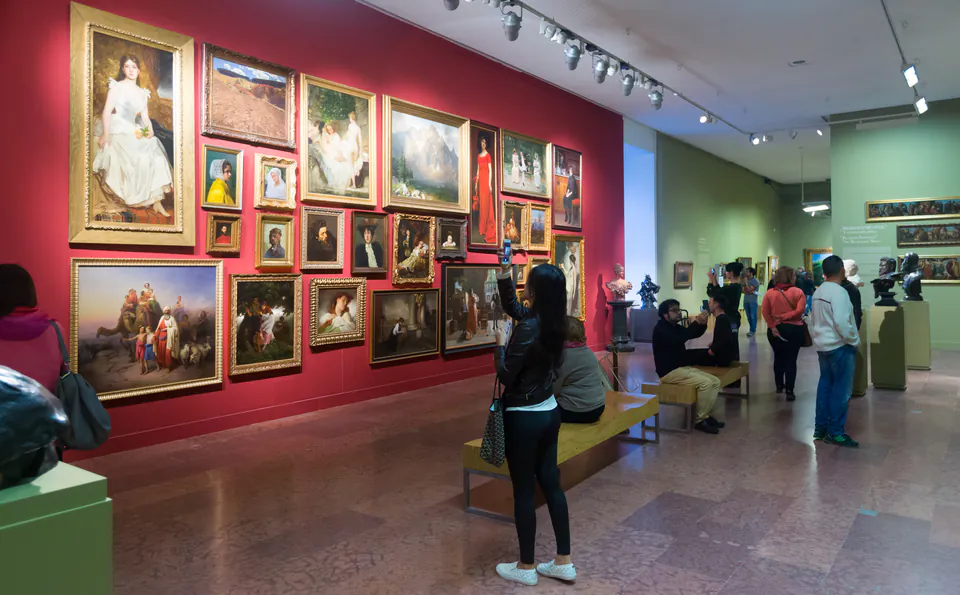The Hungarian National Museum: History, Collections, and Visit Information
On Museum Boulevard, there's this amazing building that holds Hungary's entire story. The Hungarian National Museum isn't just some old place with dusty stuff behind glass. It's where you can actually feel what Hungary is all about, from way back in prehistoric times right up to today.
Back in 1802, Count Ferenc Széchényi gave away his whole library and coin collection to start this place. His wife threw in her mineral collection too. But here's the cool part - in 1807, Parliament said "hey, everyone should help build this thing" and asked all Hungarians to donate stuff. So this museum was literally built by regular people, which makes it pretty special.
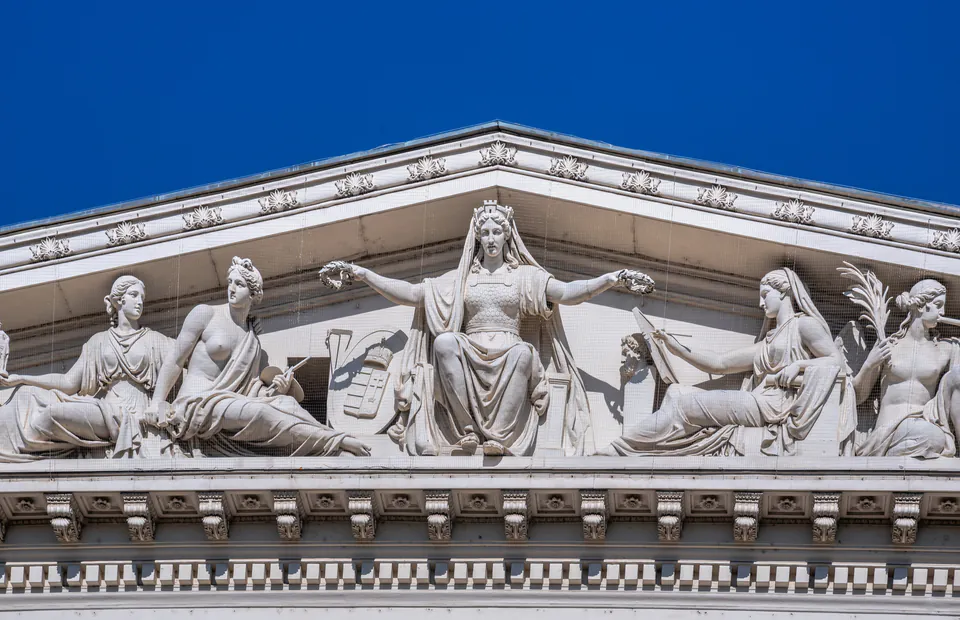
When History Happened Right Here
Something really big happened on these museum steps. March 15, 1848 - that's when poet Sándor Petőfi stood right here and read out his "12 points" demanding Hungarian independence. He also recited this passionate poem called "Nemzeti dal" (National Song). This moment basically started Hungary's whole revolution for independence. We always get goosebumps thinking about how people gathered right on these steps to hear words that would change everything.
Today you'll see statues of Petőfi and János Arany around the building. Every March 15th, crowds still come here to remember what happened. Fun fact - before the new Parliament building was finished, the Hungarian Parliament's Upper House actually met in the museum's Ceremonial Hall. Talk about mixing politics and culture!
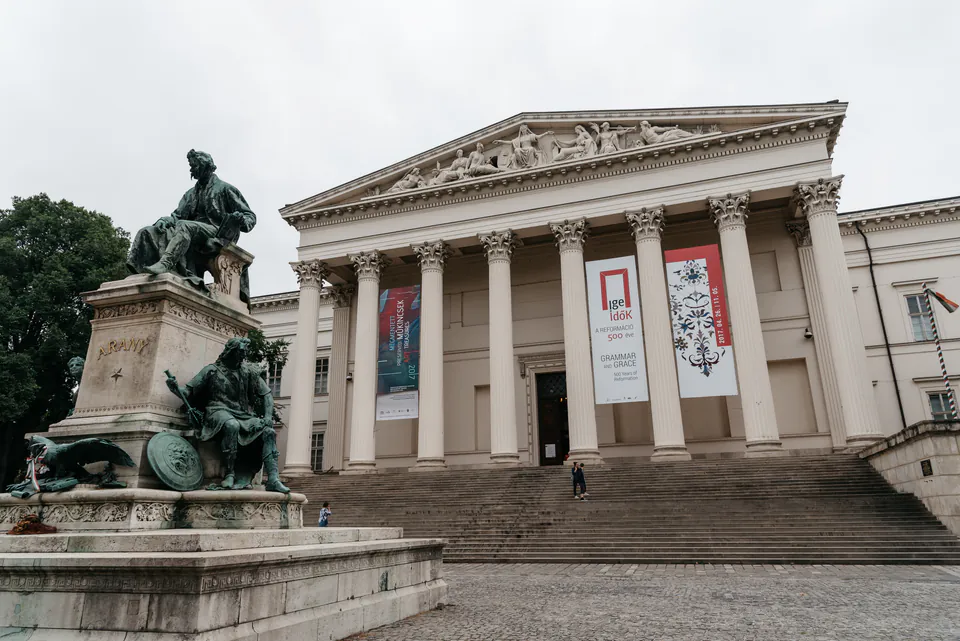
The Building is Pretty Amazing Too
Mihály Pollack designed this place between 1837 and 1847, and wow, did he know what he was doing. Eight huge Corinthian columns hold up this grand entrance, and there's this decorative section at the top with figures representing Pannonia, Science, and Art. Some Italian sculptor named Raffael Monti made these statues, including one of Hungary holding a shield with the national coat of arms.
When you walk inside, there's this incredible staircase. In 1875, they got these famous artists Károly Lotz and Mór Than to paint the walls and ceilings. So the building itself is basically part of the exhibition. We love how they made the whole place feel special, not just the stuff inside the cases.
Getting There and Basic Info
The museum sits right in Budapest's cultural area, and it's super easy to get to. Two main transport spots serve the area - Kálvin tér and Astoria. No matter where you're staying in Budapest, getting here is pretty straightforward.
Getting to the Hungarian National Museum
| Transport Mode | Lines/Numbers | Key Stops |
|---|---|---|
| Metro | M3 (Blue), M4 (Green) | Kálvin tér |
| Metro | M2 (Red) | Astoria |
| Tram | 47, 49, 48 | Kálvin tér |
| Bus | 9, 15, 115 | Kálvin tér |
| Bus | 5, 7, 8, 107, 110, 112 | Astoria |
The museum is open every day from 10:00 to 18:00, except Mondays when it's closed. The Museum Garden around it stays open much longer - 5:30 AM to 9:00 PM - so you can hang out there even when the museum is closed. We always check www.mnm.hu before going because holidays can mess with the schedule.
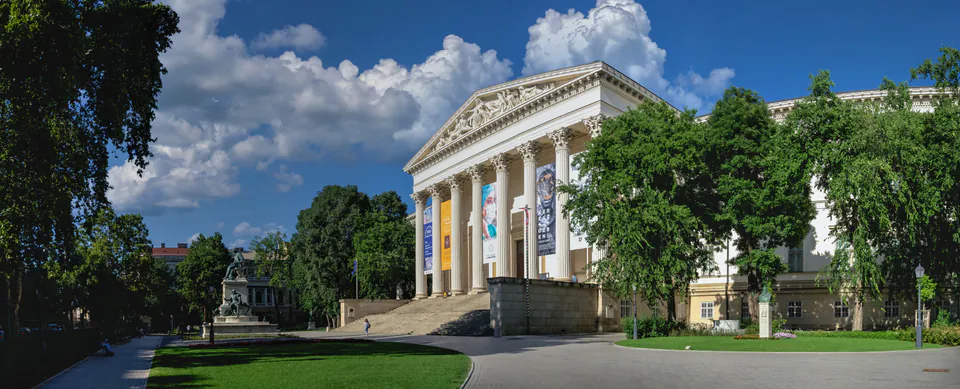
Tickets and How to Save Money
Adult tickets for the permanent stuff cost 3,500 HUF. If you want to see everything including special exhibitions, that's 7,500 HUF. There are cheaper tickets for 1,750 HUF if you're from the EU and between 62-70, a pensioner, or a parent with multiple kids under 18.
Some people get in free - kids under 6, EU citizens over 70, disabled visitors with someone helping them, teachers, journalists, and people with ICOM/ICOMOS cards. Here's a great tip we discovered: if you're under 26 and from the EU, you can visit free on the third Saturday of each month. We wish we'd known this when we were younger!
Buy tickets online at jegy.mnm.hu. Trust us on this one - you'll skip the lines and go straight to the good stuff. If you have a Budapest Card, you get in free, which is pretty good if you're hitting multiple attractions.
What You'll See Inside
The museum has seven permanent exhibitions that take you through Hungarian history in order. Downstairs has all the really old stuff - archaeology from prehistory through the Avar period (ending 804 AD). Upstairs continues the story from 804 AD to modern times.
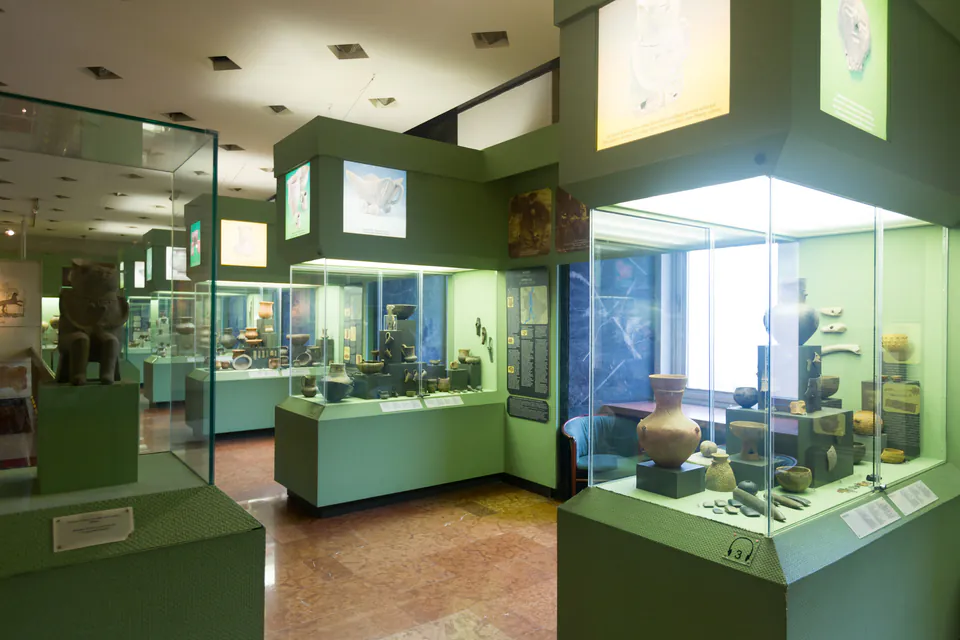
The Coronation Mantle is Incredible
This is the museum's most amazing piece. It's this silk robe covered in gold thread and pearls that Hungarian kings wore during their coronations. King St. Stephen I and Queen Giselle made it in 1031 as a gift to the Basilica of Székesfehérvár, but later it became the official coronation outfit. It basically represents the start of Christian Hungary.
Big warning: You can't take photos or videos of the Coronation Mantle. They're really serious about protecting this thing, so put your camera away when you get to this part.
Old Stuff from Way Back
The "Between East and West" exhibition downstairs covers 400,000 years of people living in what's now Hungary. From the Paleolithic times all the way to 804 AD when the Avar period ended. It's crazy to see how different groups of people lived here over such a long time.
There's also this Roman Lapidary collection with stone stuff from when this area was the Roman province of Pannonia. Inscriptions, sculptures, pieces of buildings. We found it really interesting because there aren't many other sources about what life was like back then.
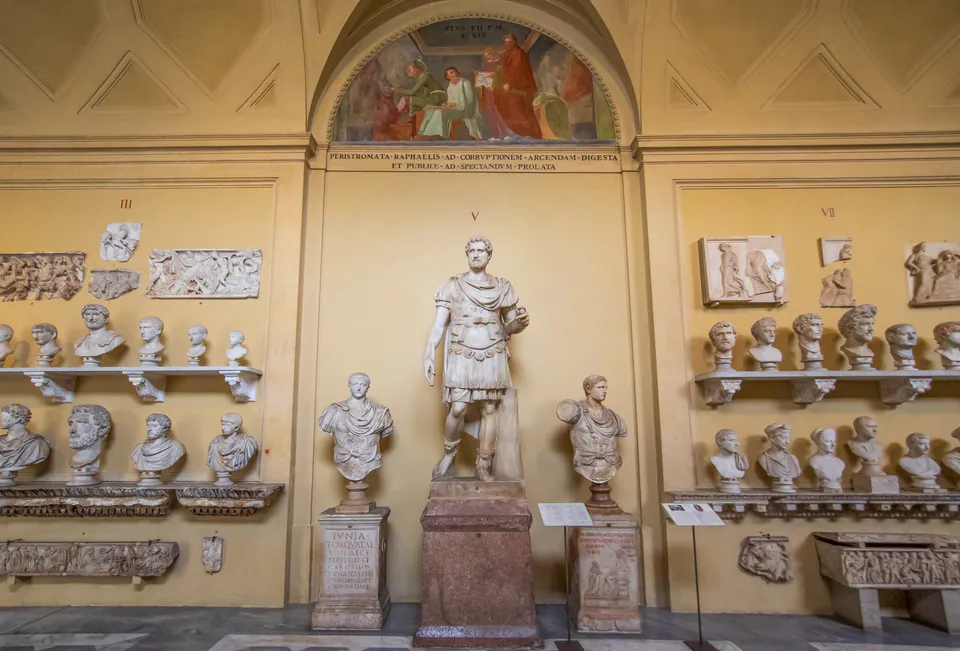
The Seuso Treasure is Mind-Blowing
This collection of fancy silver objects from the late Roman Empire (4th century AD) is absolutely stunning. It's considered one of the most important finds of late antique silver because of how beautiful and well-made everything is. You get a real sense of how wealthy people lived during the Roman Empire's last good times in this region.
Medieval Times to Modern Hungary
The first floor tells Hungary's story from medieval kingdom to the country it is today. "The History of Hungary, Part One" covers the Árpád dynasty, Mongol invasions, Ottoman occupation, Transylvania as an independent principality, and Royal Hungary up to 1703.
"The History of Hungary, Part Two" picks up from 1703 to 1990. The Rákóczi War of Independence, Hungary in the Austro-Hungarian Empire, both World Wars, communist times, and finally the switch to democracy in 1990.
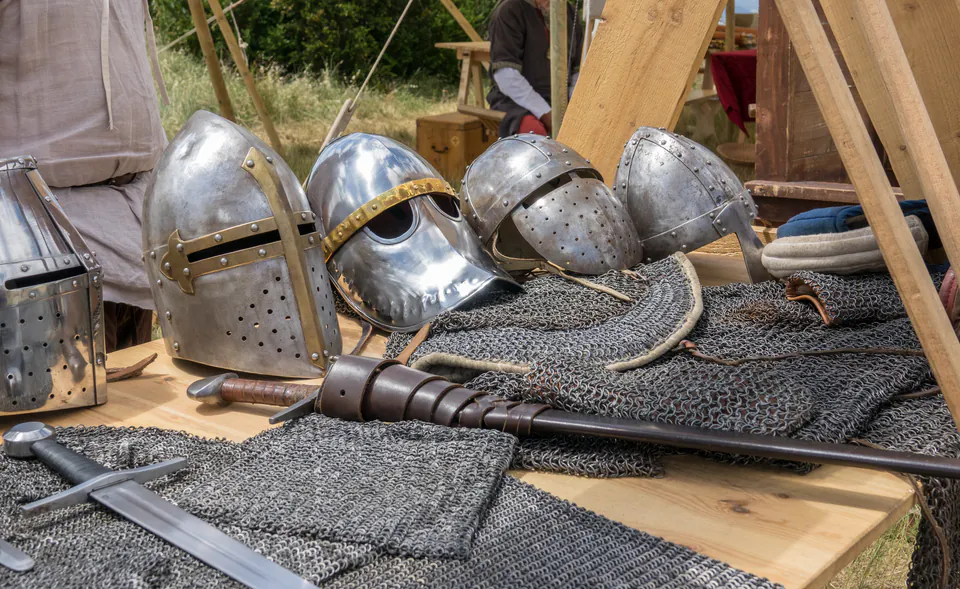
Special Exhibitions and Events
Besides the permanent stuff, they regularly have temporary exhibitions about specific topics or new things they've acquired. In 2025, the big one is "Varázshatalom – Tudás. Közösség. Akadémia." (Magic Power – Knowledge. Community. Academy.), running from May 6 to October 26. It's celebrating 200 years of the Hungarian Academy of Sciences, looking at innovation, scholarly work, and community in building the nation.
Temporary exhibitions need separate tickets (usually 3,900 HUF full price, 1,950 HUF reduced), but they give you fresh perspectives and often show stuff you rarely get to see. We always check the official website for what's on because it changes throughout the year.
Tours and Audio Help
If you want someone to explain things, guided tours are available in Hungarian, English, Italian, French, and German. Tours last 45-60 minutes and can handle up to 30 people. You need to book at least a week ahead through tarlatv@mnm.hu, and it costs 25,000 HUF for groups of 1-30 people (plus you still need to buy entrance tickets).
The museum doesn't have official audio guides, but there's this free smartphone app called MyTours.city that covers the museum's origins, history, exhibits, and gives insider tips. It's made by a third party, but it works pretty well for exploring at your own pace.
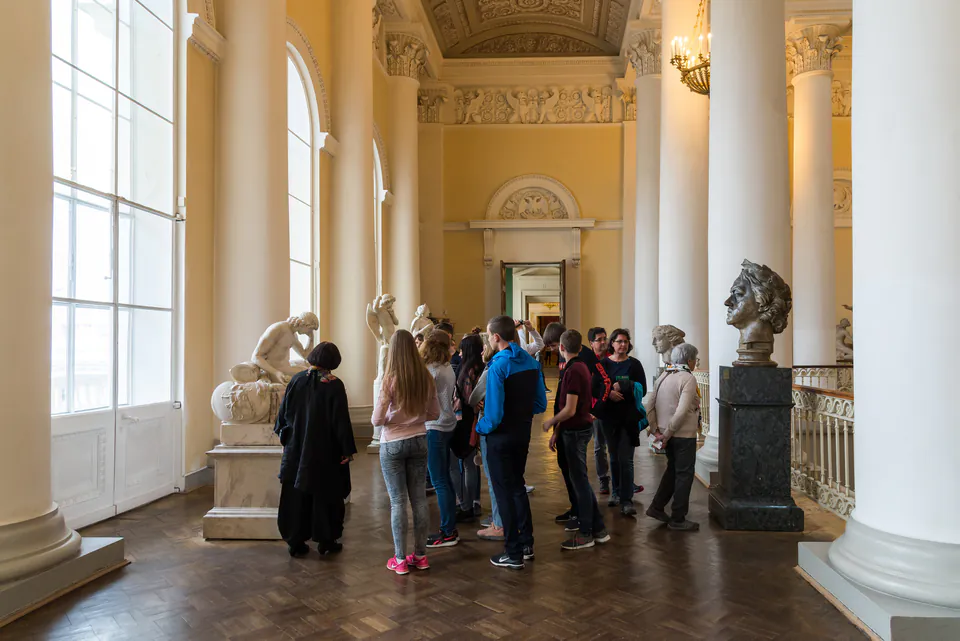
Tips for Your Visit
Plan on spending at least 2-3 hours if you want to see the main exhibitions properly. If you're really into history, you could easily spend longer. They make you leave bags bigger than 30x25x15 cm, backpacks, coats, and umbrellas in the cloakroom. It's free (you just need a 100 HUF or 1 Euro coin that you get back) and it actually makes walking around easier.
You can take photos for personal use in most of the museum, but remember - absolutely no photos of the Coronation Mantle. No flash, tripods, or selfie sticks in the exhibition areas either. Just be considerate of other people.
The museum has good facilities - free WiFi, accessible restrooms, mobile chairs if you get tired, and a café for snacks. The Museum Garden is nice for taking a break and looking at Pollack's building from different angles.
Accessibility for Everyone
The Hungarian National Museum really tries to make sure everyone can visit. If you have trouble with mobility, you can get in through the staff entrance on Bródy Sándor utca, and volunteer staff will help you figure out where everything is. There are accessible restrooms and baby-changing facilities, and disabled visitors get free admission plus one companion.
If you're visually impaired, they have special accommodations including some artifacts you can actually touch and a special audio player for the archaeology exhibition. They also do group tours for visually impaired visitors at good rates. Contact (+36-1) 327-7749 or email tarlatv@mnm.hu to set it up.
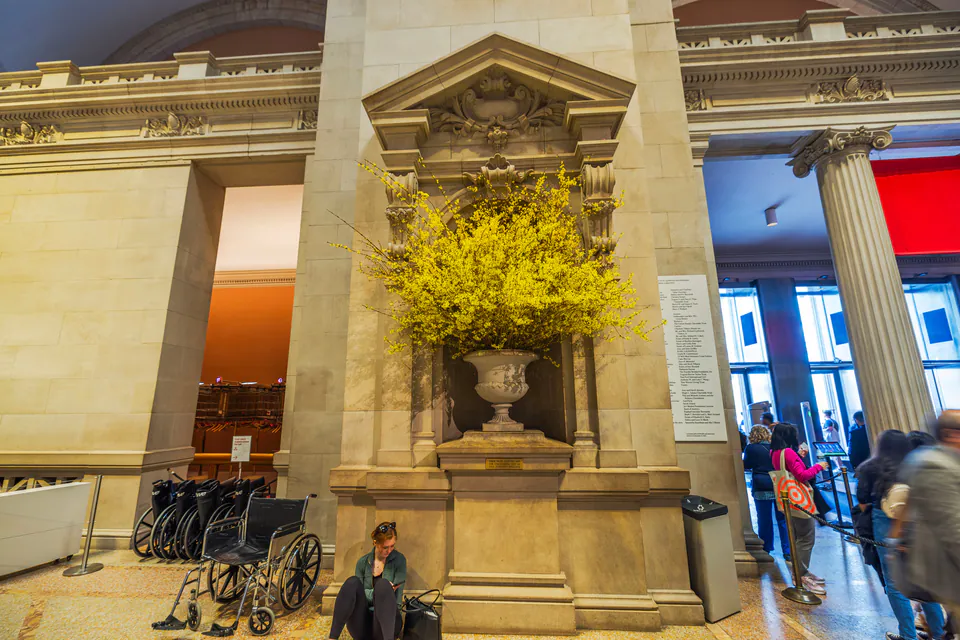
What Else is Around Here
The museum's location is perfect for exploring more of Budapest. The Great Market Hall is just a short walk away - great for experiencing local atmosphere and trying traditional Hungarian food. The historic Jewish Quarter with its famous ruin bars is nearby, and Váci Street's pedestrian area is good for shopping and people-watching.
For food, there's the legendary Auguszt Cukrászda right at the museum's address that has authentic Hungarian pastries. Perfect after all that history! The nearby Múzeum Kávéház is this historic literary café from 1885 that might be open (check first), where you can eat surrounded by local cultural history.
More Than Just a Museum
The Hungarian National Museum is way more than just a regular museum. It's a living part of Hungarian identity and shows how resilient these people are. From starting as a collective national project to being the site of revolutionary history, from its incredible architecture to its comprehensive collections, everything about this place reflects the Hungarian spirit.
Whether you're interested in the archaeological mysteries of ancient Pannonia, the medieval glory of royal Hungary, the revolutionary passion of 1848, or the complex story of modern Hungarian history, this place gives you real insights into what makes Hungary unique. We discovered that the museum doesn't just show you artifacts - it tells the story of a people, their struggles and victories, their culture and identity.
